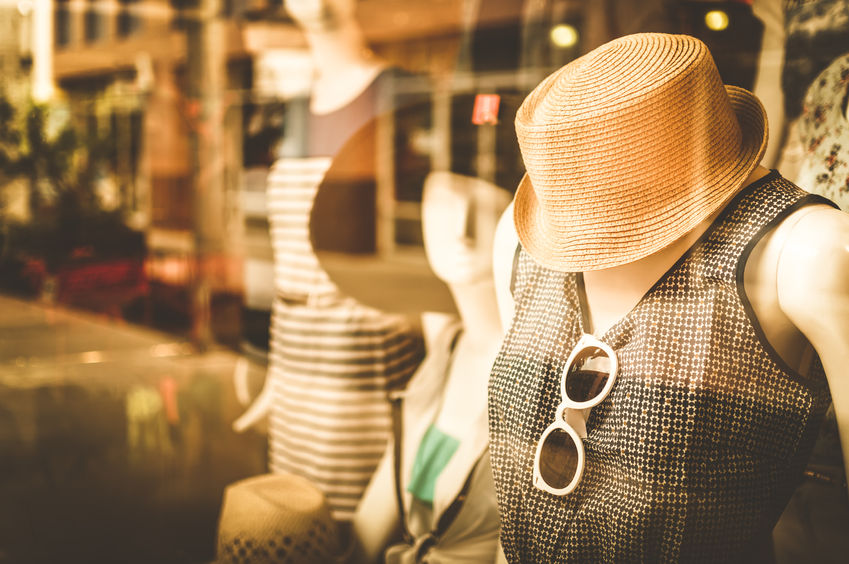Bolster Your Prowess about Pre-Owned Fashion Gems
Vintage shopping can be a great way to save money and add some interesting pieces to your wardrobe. You can score a great deal on one-of-a-kind items, or find a hidden treasure. After all — who doesn’t want to look unique on a budget?
If you’re new to the process, however, vintage shopping can be overwhelming. Racks and racks of clothes that are sometimes poorly organized, dusty, or in need of a good cleaning can turn off a novice.
So how do you find the right pieces without going over budget? With a little legwork, it’s possible.
Here are our best tips for smart vintage shopping:
Nix the Head-to-Toe Look
Unless you’re headed to a costume party, all over vintage can be tough to pull off. Think about incorporating one or two items into your wardrobe for a more balanced look.
This is also a good rule of thumb for staying on budget. A statement necklace, brooch, or handbag can change the entire look of an outfit you already have. It’s a way to add some bang without breaking the bank.
Make a List (and Manage Your Expectations)
Prior to shopping, make a list of pieces you’re missing in your wardrobe. Do you need a new blazer? A pencil skirt? Some statement tops? Then let the sales associate know what you’re looking for — she’ll be able to point you in the right direction.
Don’t get discouraged if you don’t see the perfect piece — and resist the urge to buy items that aren’t right just so you can feel like you’re walking out with something. Vintage stores do have turnover, and sometimes you may need to make a few trips before finding what you’re seeking.
Think About Fit
Vintage sizing can be vastly different than what we see today. Over the years, sizing has changed significantly — a phenomenon often referred to as “vanity sizing” — and today’s “4” may be equivalent to yesterday’s “8” (or even “10”!). Because vintage stores may carry clothing from five, 10, or 20 years ago (along with some more current pieces), the size variety in one shop can be huge.
Alice Sibley, founder of Earning My Two Cents, suggests checking the racks above and below your size, and ignoring the number on the tag. Sometimes items can be tailored for the perfect fit, but it’s important to be realistic. “Find the fitting room, and scrutinize the fit,” she says. “If a piece of clothing is cut wrong, lays weird, is too short, or just plain doesn’t fit, don’t get it.”
Exercise Quality Control
Always check for wear and tear before buying. That means inspecting the garment for holes, rips, and even smelling it (yes, smelling it). Some defects — such as a missing button, small stain, or loose thread — can be easily fixed. Others may be more difficult.
Sibley cautions against buying anything with a large mark or tear unless you know what it is (and are certain you can either remove or mend it). If you aren’t sure, and still want to purchase it, just remember you’re taking a gamble. “Make sure you still like the item and can hide the stain if it doesn’t come out,” she says. Also be sure to ask for more of a discount.
Consider Sourcing Online
If you don’t live near any great vintage shops, check out the sources for vintage online. Vintage shopping via the net can be a little trickier than in person, primarily because you eliminate the possibility of checking items for damage and fit.
Luckily, most web-based boutiques are thorough in their descriptions and provide multiple images. Just make sure you shop from a site that offers a generous return policy, so you can ship the items back if they don’t fit. We love Nasty Gal Vintage (for higher end pieces), The Rusty Zipper (for large variety of mid-range pieces), and ModCloth Vintage (for dresses, shoes, and everything in between).
Fashion designer Vivienne Westwood once said “Buy less, choose well, and mix it all.” We couldn’t agree more. With a little legwork – and the help of some great vintage – you can create a look that’s unique, beautiful, and best of all, thrifty.
 Interviewer Interview Prep
Interviewer Interview Prep Impactful Mentees
Impactful Mentees Benefits of a Mentor
Benefits of a Mentor Advice for First-Time Managers
Advice for First-Time Managers Overcoming the 18-month Itch
Overcoming the 18-month Itch Dressing for Your Style
Dressing for Your Style Interview Style Tips
Interview Style Tips Women's Stocking Stuffers
Women's Stocking Stuffers Gift the Busy Traveler
Gift the Busy Traveler Father’s Day Gift Guide
Father’s Day Gift Guide Airport Layover Activities
Airport Layover Activities Traveling & Eating Healthy
Traveling & Eating Healthy Travel Like a Boss Lady
Travel Like a Boss Lady The Dual California Life
The Dual California Life Gifts for Thanksgiving
Gifts for Thanksgiving Summer Reading List
Summer Reading List Top Leisurely Reads
Top Leisurely Reads New Year, New Books
New Year, New Books Life Lessons from a Sitcom
Life Lessons from a Sitcom Oprah, Amy or Amal?
Oprah, Amy or Amal?






